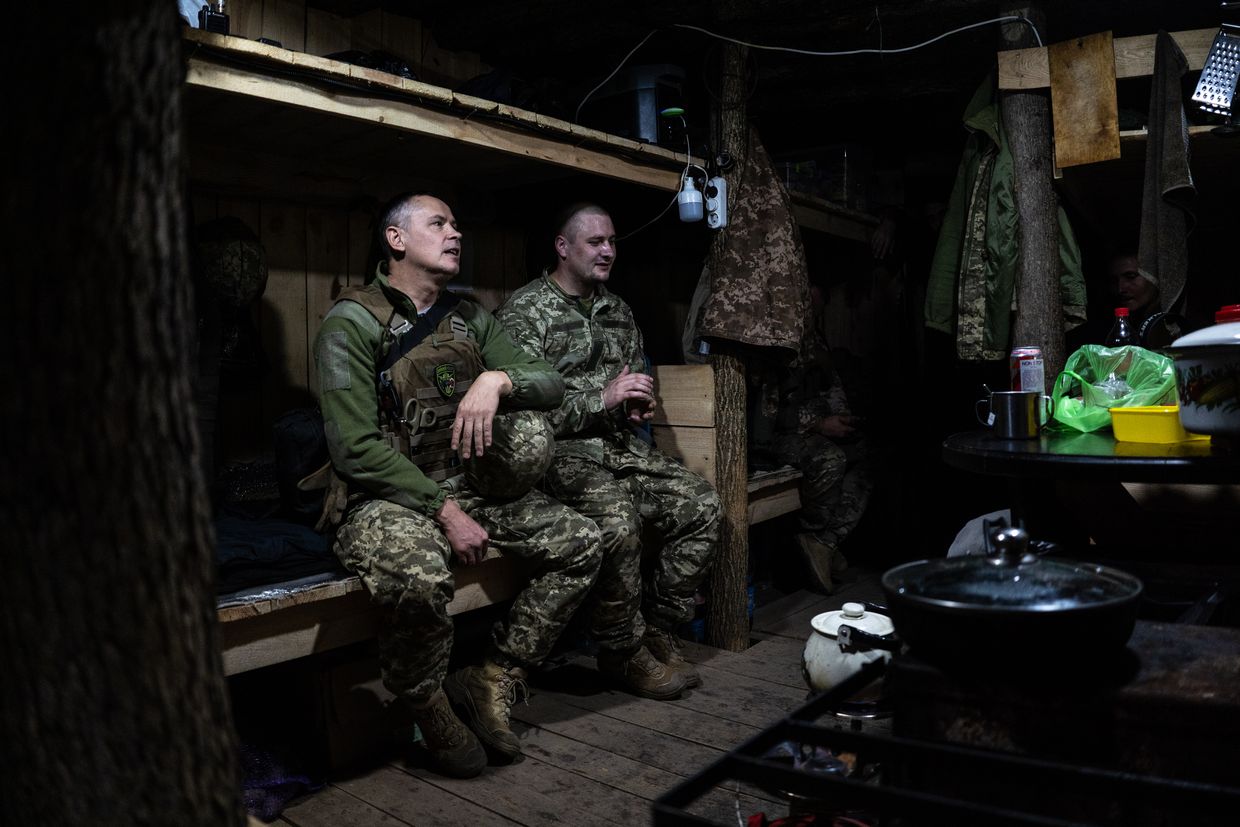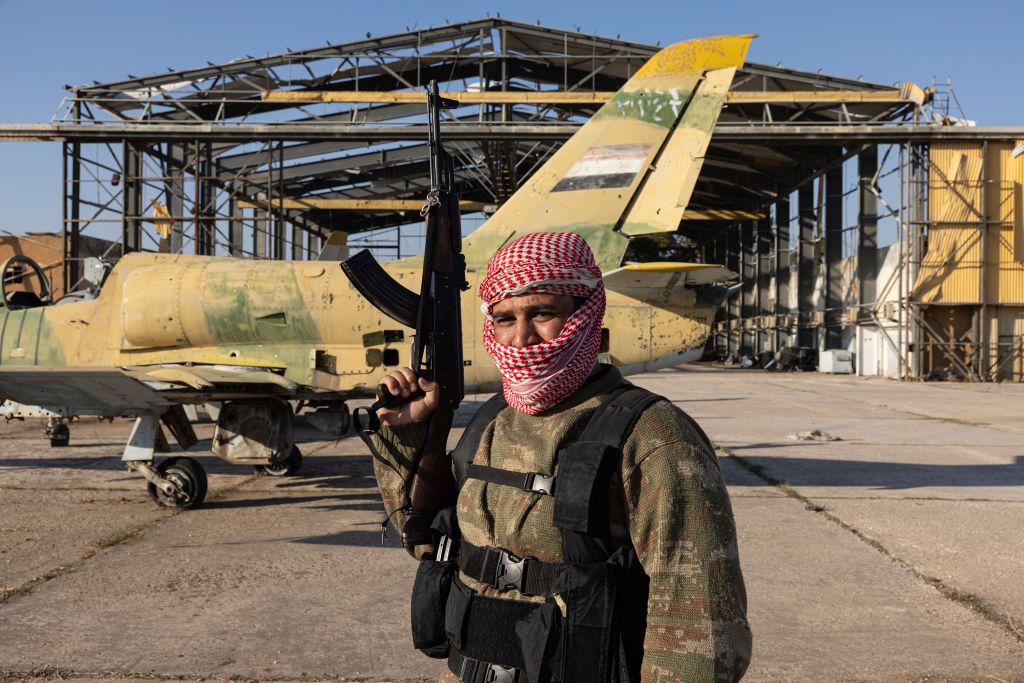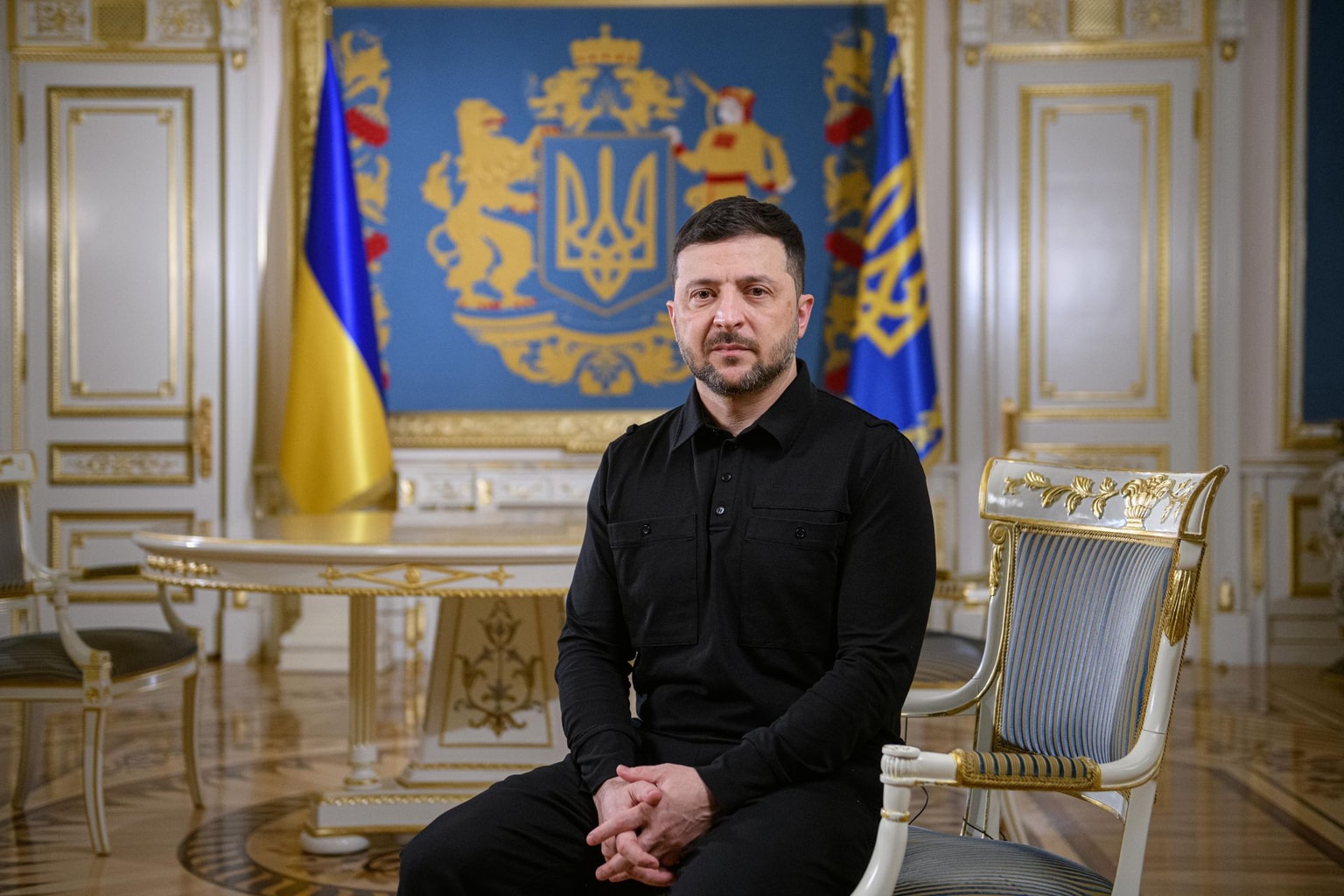
Russian drone strikes against Ukraine are surging to record levels — how bad can it get?
Firefighters respond to a fire at a damaged apartment after it was hit by a Russian drone strike in Ternopil Oblast, Ukraine on December 2, 2024 (State Emergency Service of Ukraine/Anadolu via Getty Images)
For the third month in a row, the number of Shahed-type kamikaze drones launched by Russia at Ukraine surged to record levels.
According to figures from Ukraine's Air Force, Moscow deployed a total of 2,576 drones during November, up from 2,023 the month before.
And the Kremlin clearly doesn't intend to let up on the relentless nightly assaults — speaking in September, Russian President Vladimir Putin said Moscow is planning to increase drone production "almost ten times" this year.
In 2023, the Russian army received about 140,000 drones of different types, according to Putin. This year, Putin said, Moscow wants to produce 1.4 million.
This begs the question: How bad could it get for Ukraine?

Ukraine's air defenses, bolstered by Western-supplied systems such as Patriot and NASAMS, have become highly effective at defending cities from Russian mass missile attacks.
But due to the high price of missiles for such systems, which makes using them against relatively cheap drones highly inefficient, Ukraine developed, and relied on different methods to combat them.
"They have established an approach using mobile fire groups and a huge network of sensors of different types to detect and track these drones," Federico Borsari, a fellow at the Center for European Policy Analysis (CEPA), told the Kyiv Independent.
"They are using anti-aircraft guns and machine guns, even cheaper rockets, and these kinds of interception techniques are much more cost-efficient compared to Patriot and other types of air defenses."
Ukraine has also become more adept at using electronic warfare (EW) techniques to confuse and steer Russian drones in the wrong direction during attacks.
GPS spoofing involves manipulating or deceiving a drone's GPS receiver by transmitting fake signals, tricking it into thinking it's in the wrong location and heading elsewhere.
Using both mobile fire groups and EW, Borsari says that only around 5% of the drones launched by Russia actually make it through Ukraine's air defenses.
But he adds that just as Ukraine has adapted to defending against drone attacks, Russia is also adapting in turn.
When Russia first began deploying kamikaze drones to attack Ukraine in September 2022, Moscow used the imported Iranian-made Shahed-136 drones.
Since then, Russia has begun manufacturing its own Shahed-type drones and developing new variations.

Decoy, thermobaric, and shrapnel drones
According to recent reports, Russia has been able to produce a variety of kamikaze drones, among them decoy drones to deplete Ukraine's air defense, as well as thermobaric and shrapnel ones to inflict maximum damage.
The most significant, in terms of the size of attacks, is the number of decoy drones being employed by Russia.
Ukraine's military intelligence (HUR) reported on Nov. 18 that Russian forces are using cheap decoy drones with foreign components to overload Ukraine's air defense system.
These are reported to be a variation of the Gerbera drone. Made from materials such as plywood and foam, they are reportedly ten times cheaper than Iran's Shahed drone.
While some versions carry explosives or reconnaissance equipment, some are equipped with neither and are launched alongside their deadly counterparts in order to distract Ukraine's air defenses.
"Sometimes they're decoys, sometimes they're not — it's all meant to create more problems for Ukrainian air defenses and to waste a lot of resources in tracking, detecting, and engaging," Borsari said.
According to an investigation by the Associated Press (AP) on Nov.16, Russia has recently begun equipping some drones with thermobaric warheads, normally associated with missiles.
Thermobaric warheads create an intense wave of high pressure and heat that can lead to devastating injuries, including collapsed lungs, crushed eyeballs, and brain damage.
While controversial, thermobaric munitions are not prohibited under international law.
After a recent attack on the city of Sumy overnight on Nov. 22, Governor Volodymyr Artiukh said the drones used in the strike were equipped with shrapnel munitions.
In addition to the explosive power of the warhead, they blasted out ball bearings from the impact area. Two people were killed in the attack, and 12 others were injured.
"These weapons are used to kill people. Not to destroy structures, just to kill more people," Artiukh said in a video uploaded to the regional government's official Telegram channel.

Russian drone production
The main limiting factor in the size of the drone attacks that Russia can launch is how many of them it can produce, Sascha Bruchmann, a military analyst at the London-based International Institute for Strategic Studies, told the Kyiv Independent.
Russia's main Shahed-type drone production plant is believed to be located in the Alabuga Special Economic Zone in the central Republic of Tatarstan.
Originally, it was intended to manufacture 6,000 drones a year, but a report from the Wall Street Journal (WSJ) in May said it was way ahead of schedule and had produced 4,500 by the end of April.
Ukraine has targeted the plant, successfully hitting it with a long-range drone strike at the beginning of April, but Bruchmann said that given the increase in drone attacks in recent months, it didn't significantly disrupt operations.
"I guess what we're seeing now means that the factory is running again," he said.
According to Borsari, this likely means "we will see potentially even higher numbers per day of drones launched against Ukraine in the coming weeks," though he adds it isn't certain that Russia can obtain enough components to keep up with demand in the longer term.

Last month, President Volodymyr Zelensky called for tougher sanctions against the providers of components used in Russian drones.
Russia continues to avoid sanctions through the use of sanctions evasion networks and shell companies. Russia is also aided in sanctions evasion through its allies, including China, Iran, and North Korea.
"Microchips, microcontrollers, processors, and many other parts are essential for enabling this terror," Zelensky said.
Borsari said that by managing to circumvent current sanctions, Russia will be able to "keep a steady supply of components, not without difficulties, of course."
"I expect (the number of drones being used in attacks) to remain at this level, if not, go up in the coming weeks," he added.
But Bruchmann said it was too early to tell if any further rise in numbers is a long-term trend, adding there's the possibility that Russia is deploying stockpiles ahead of Donald Trump entering the White House in January.
"I wouldn't panic just yet," he said, adding the increase in numbers could be laying the ground for any negotiations led by the U.S. between Kyiv and Moscow.
"Putin is basically telling (the U.S.) 'I can escalate too, and this is not going to be as easy.'
"So it's too early to tell if this is a longer-term trend."












